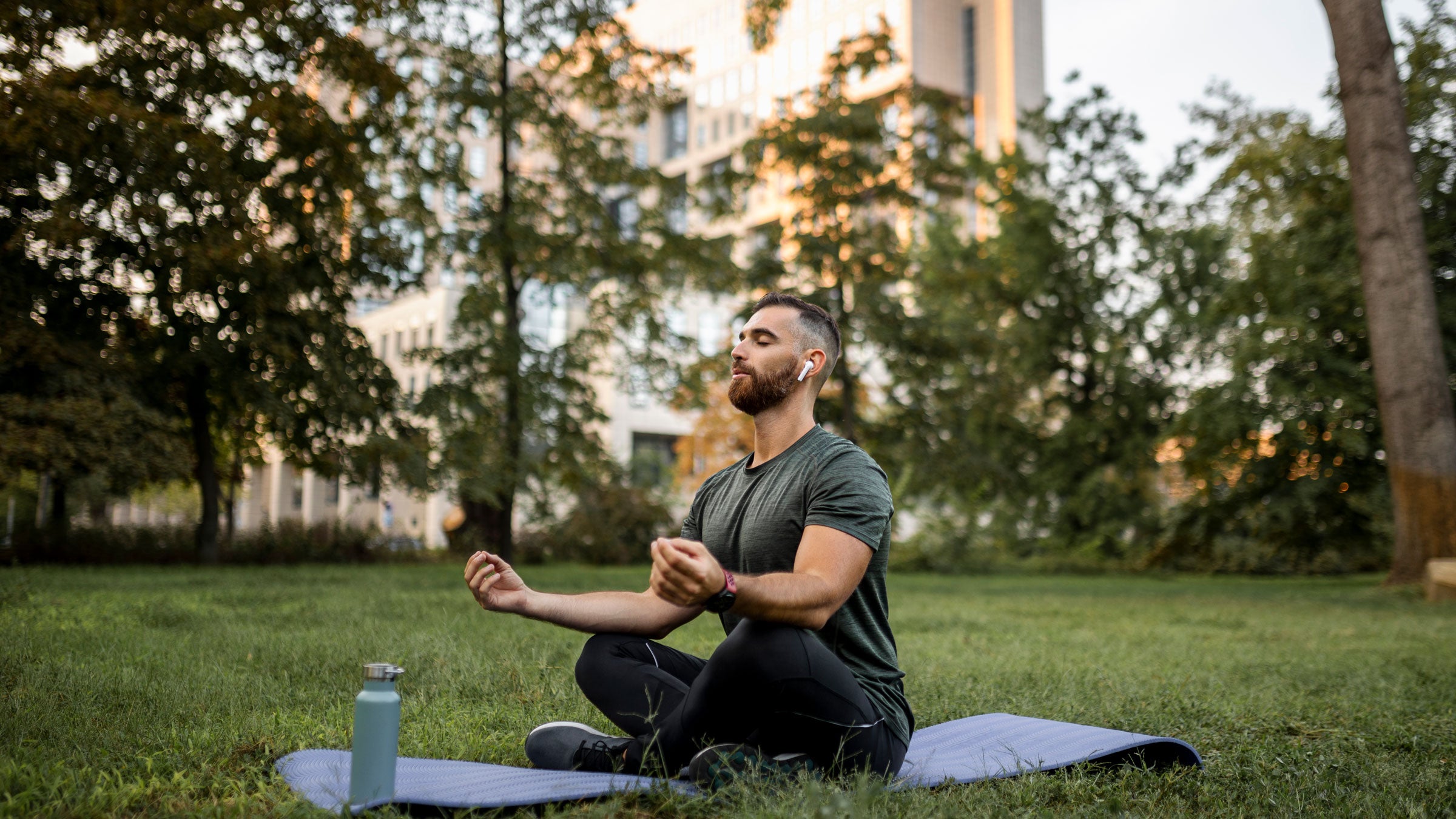Trust me: Being injured keeps you busy. There are countless doctors’ appointments, physical therapy exercises, and cross training programs. Add meditation and visualization sessions to that list. When I recently hurt my hip and couldn’t run for three months, physicians repeatedly urged me to integrate these mindful practices into my recovery, suggesting it would help the healing process. With everything else to do, it felt silly to spend time sitting quietly and imagining my way back to health. Was it just wishful thinking? Or was there something to it?
You likely know that your natural response to injury—anger, depression, hopelessness—is not helpful. Rather, it’s the opposite of what you need to be doing. “The Buddhist term for this sentiment is the second arrow: it makes unpleasant experiences even worse because now we’re worrying about it and we’re imagining it happening forever,” says Simon Goldberg, a psychologist at the University of Wisconsin-Madison. “It adds all this fuel to the fire.” Enter meditation, a practice that reduces stress, depression, and anxiety, while supporting your mental health when you’re sidelined. But whether it actually helps to heal the actual injury remains unclear.
Does Meditation Benefit the Physical Body?
It’s tempting to leap to the conclusion that meditation’s ability to lower stress levels can also lead to physical healing. And yes, have found that the practice can reduce inflammation and boost the immune system. But large, definitive studies on injured athletes examining the effect of meditation on the injured physical body haven’t been done. Britton Brewer, a psychology professor at Springfield College in Massachusetts, says that, while the evidence for meditation and visualization’s psychological effects (feeling more confident, having less anxiety about returning to the playing field) is robust, the claims for their physical effects (hormonal changes, better healing, a stronger immune system) are less well-documented.
However, a few smaller studies do underscore the potential of meditative practices, such as mindfulness, to benefit athletes. In a Brewer collaborated on, runners with knee injuries went through an eight-week mindfulness training program that included breathing exercises, body scans, gentle yoga, and meditations. After learning the techniques over two sessions, participants were asked to practice at home for up to 45 minutes each day. Those in the mindfulness group had less pain when they returned to running, compared to the control group.
Mindfulness training may also help prevent injury. In a published in the Journal of Sport and Exercise Psychology, soccer players participated in seven weekly group sessions that focused on mindfulness exercises and acceptance techniques. They also listened to recordings of the exercises throughout the week. Over the course of the season, the players who participated in the mindfulness sessions had fewer injuries compared to their teammates, a finding Brewer contributes to reduced stress.
When it comes to visualization exercises, such as imagining a bone rebuilding, the evidence in athletic rehabilitation is mixed or lacking. But studies from other fields provide some hope. When used in conjunction with standard cancer treatments, guided imagery and in breast cancer patients. Research also reveals that imagined strength workouts lead to real muscle gains, and visualization in immobilized muscles.
Even if these practices don’t help ease physical symptoms, the mental health support can be crucial. “I wouldn’t want to downplay the importance of the psychological aspects of an injury experience,” Goldberg says. Meditation and visualization can give you a sense of control: There is still something you can do to work toward your goals, even before you’ve been cleared to do much else. But Carrie Jackson, a sports psychologist and author of , says it’s vital to believe in it. “If you think that it won’t help, then it won’t,” she says.
So, Should You Try a Mindfulness Practice for Your Physical Health?
There’s no harm in testing it out. Goldberg recommends trying mindfulness practices for a week before making a judgment. The , created by his colleagues at Healthy Minds Innovations, is free for download and has different practices, such as loving-kindness meditations and purpose-based mindfulness exercises. It will likely be uncomfortable and difficult at first, but that doesn’t mean you’re failing. “It takes time to get our minds in shape just like it would our bodies,” Goldberg says.
While working on your mind may seem easier than your physical training, that’s not necessarily the case. These mental practices are hard, and you need to take breaks, just as you would take a recovery day when training. “It’s work,” Jackson says. “It takes time, as well as emotional and mental energy to do these things, and that is real energy.” (She also stresses prioritizing one of the best recovery tools: sleep.)
How Much Time Should You Spend on Mindfulness Practices?
These mindfulness practices don’t have to take much time: on the psychological effects of meditation found positive results in as little as five minutes a day. And if you have a few moments to spare—maybe you’re stuck sitting in an ice bath or waiting for a doctor—there might be benefits beyond injury recovery. “If you can manage your stress, you can not only feel better and be less likely to get injured, but you might perform better as well,” says Brewer. “It’s kind of a bonus.”
I’ll never know if my attempts at mindfulness practices helped my hip heal faster. Despite this being my worst injury to date, daily meditation certainly helped lessen the onset of depression and hopelessness. I never did get comfortable visualizing the bone healing and eventually gave up trying.
Now that I’m back on the roads, I prefer the meditative rhythm of my footsteps and have fallen out of the meditation habit. But the evidence that a mindfulness practice could prevent me from being sidelined again is sending me back to the mat. A few minutes each day to keep me doing the sport I love? I’ll take it.


